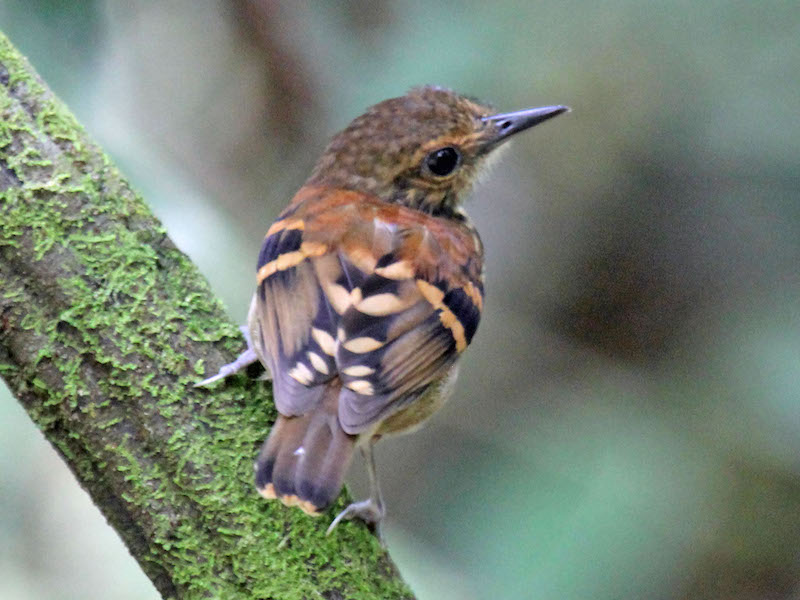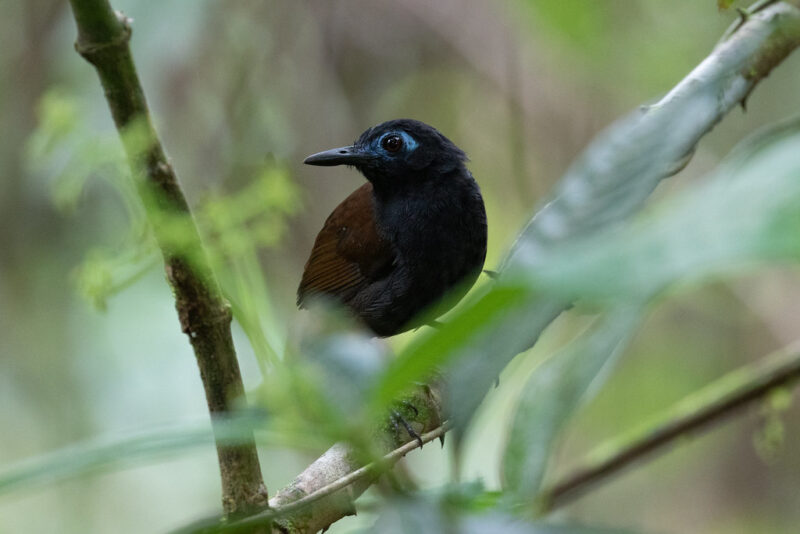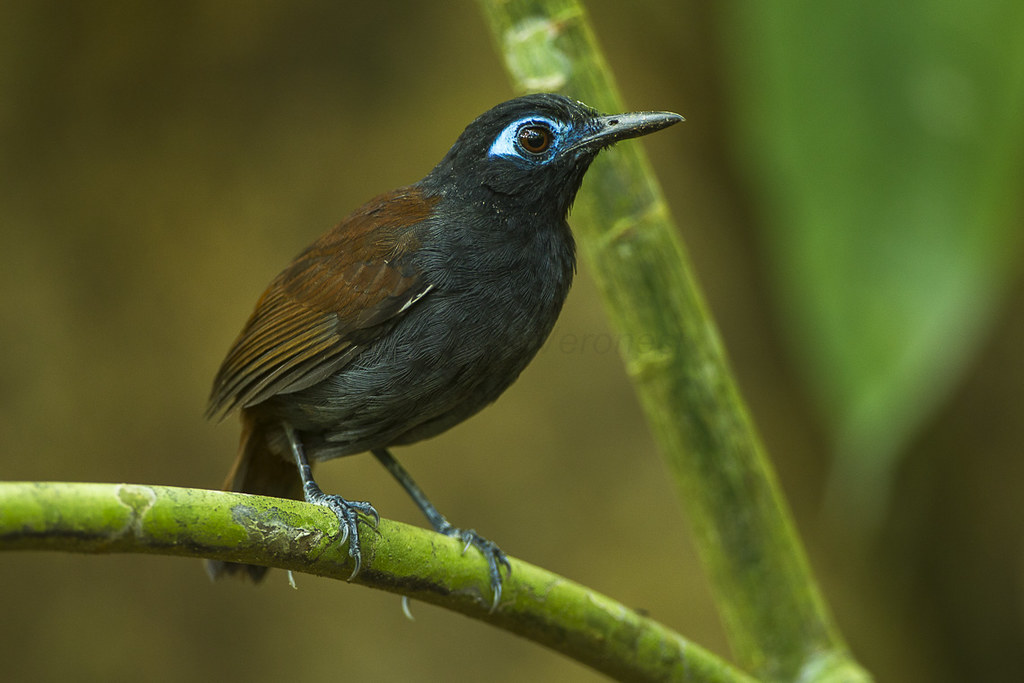Chestnut-backed Antbird
and The Thamnophilidae family.
Thamnophilid Family (Antbirds)
No large family of birds is more closely bound than the antbirds to the humid forests and lush thickets of tropical America.
The Antbirds are a large family of birds only found in the Neotropics. Most reside in lowland forests where they have adapted to niches ranging from thornscrub to humid jungle.
Unlike other suboscines about which there has been confusion over the boundaries between families, the Thamnophilidae are well recognized and well defined group once it became clear that the Antpittas (Grallariidae) and the Antthrushes (Formicaridae) were differents families. The remaining Antbirds are a monophyletic group of more than 230 species in 60 genera.

Why are they called Antbirds?
Although most members of the Antbirds have the words “Ant” in their name, that does not imply that they all eat ants. Their diet is almost exclusively arthropods. However, a subset of Antbirds are known to follow “Army ants”. These species of hunting ants (Dorylinae) are diurnal swarm raiders, fanning out along broad fronts containing hundreds of thousands of ravenous carnivorous ants. In the process, these flush large numbers of arthropods and small vertebrates, many of which are normally concealed in leaf litter. Ahead of the swarm await opportunistic birds and parasitic wasps and flies, ready to pounce on potential prey or hosts fleeing ants. As a matter of fact, the birds do not eat the ants, rather, the army ants provide an important service that greatly increases foraging efficiency, the birds allow the ants to act as “beaters”, which drive an abundance of prey right to their laps.
Nothing cheers the heart of a Neotropical birder like finding an active army ants on the forest floor, attended by many species. Some 18 species in seven genera are considered “obligate” a half-dozen species in four genera are regular ant-followers but can be frequently found away from the ants.
The widespread Chestnut-backed Antbird.

Natural history
The signature look of five species of Antbirds found in Costa Rica is the blue orbital skin (the skin surrounding the eye). The Chestnut-backed Antbird is one of these species and is distinguished from the others by its slate-colored head and chestnut-backed. The other Antbirds species that you are likely to see in Costa Rica with the blue orbital-skin are the Zeledon’s Antbird, Bicolored Antbird, Bare-crowned Antbird and Ocellated Antbird.
Description
The Chestnut-backed Antbird is heavy-bodied and short-tailed, typically 14 centimeters (5.5 in) long, and weighing 28 grams 0.99 oz). Both sexes male and female have a blue bare patch of skin around the eye. The adult male has a blackish head, neck and breast, and the rest of the upper parts, wings and tail are chestnut.
Her underparts are a darker chestnut in the nominate subspecies of the Caribbean lowlands from Nicaragua to Panama, but more rufous in M. e. occidentalis of the Pacific lowlands from Nicaragua to Panama, but more rufous in the M. e. niglarus from eastern Panama and far north-western Colombia .
Distribution
It is found in humid forests in Central and South America (Chocó-Magdalena), ranging from eastern Nicaragua to western Ecuador. It mainly occurs in lowlands up to and altitude of 900 meters (3,000 ft).
Behavior
As you can tell by the name, Chestnut-backed Antbirds follow army ant swarms; however, they only do this occasionally and are not considered obligate, or professional, army ant followers.
They are strongly associated with the dark undergrowth tree falls or dense thickets. They often join mixed flocks but won’t necessarily move along the forest with the flock, but will rather join them while ant swarms are moving through the dense thickets in which the Chestnut-backed Antbirds are found. Once the army ants or the mixed flock is gone, they will remain in the undergrowth found in their territory. Chestnut-backed Antbirds mainly hop along very low lying perches or along the ground and peck their prey, which mainly consists of insects and spiders from the ground or near the ground vegetation.
They are territorial throughout the entire year and both the male and female sing duets back and forth to each other and in response to their nearest neighbors. When disturbed, they will pump their tail downward, droop their wings, and fluff up their feathers.
They nest low in small bushes or debris during the rainy season from April to October. They usually lay two eggs and both parents incubate and tend to their young.

